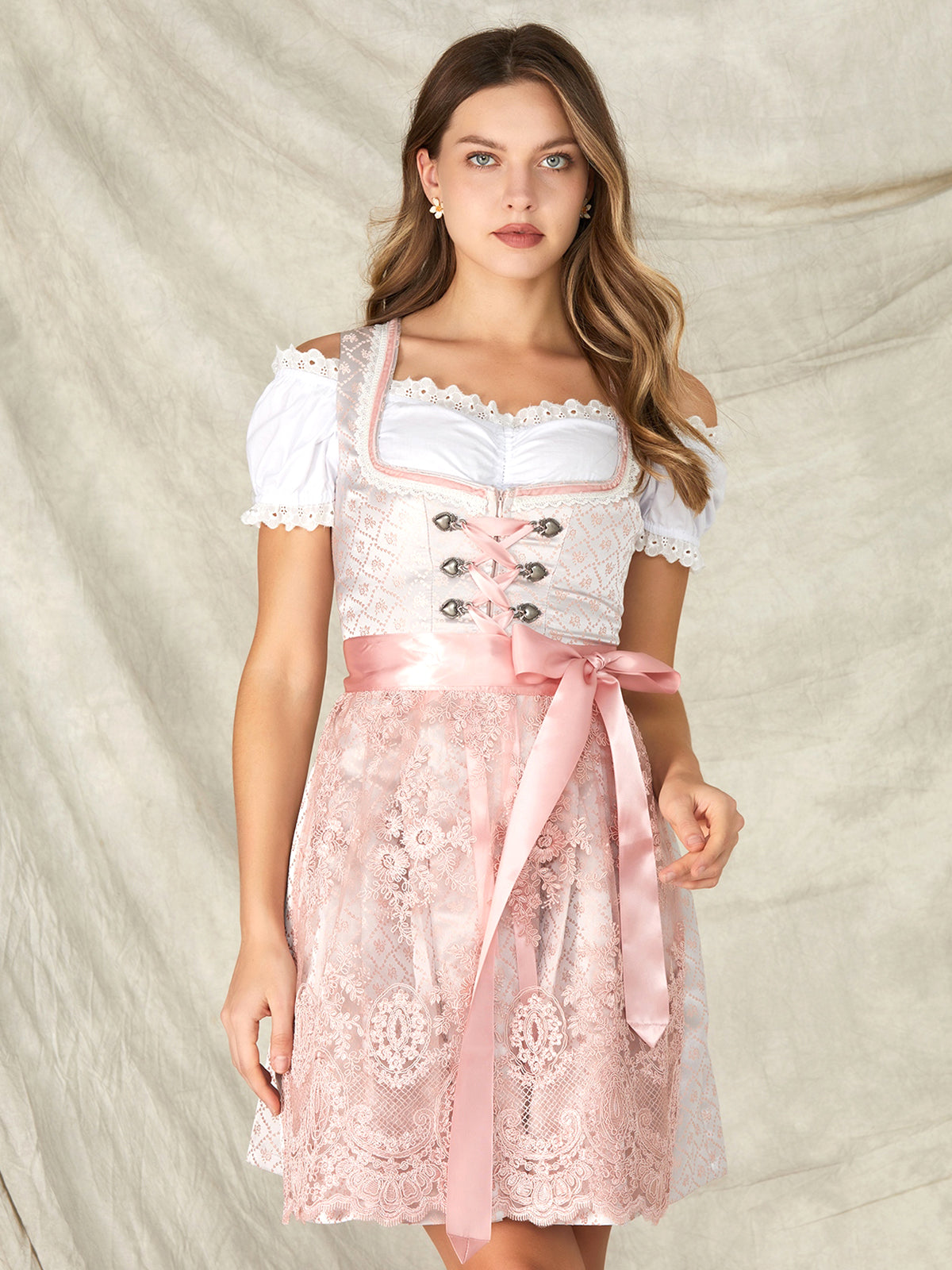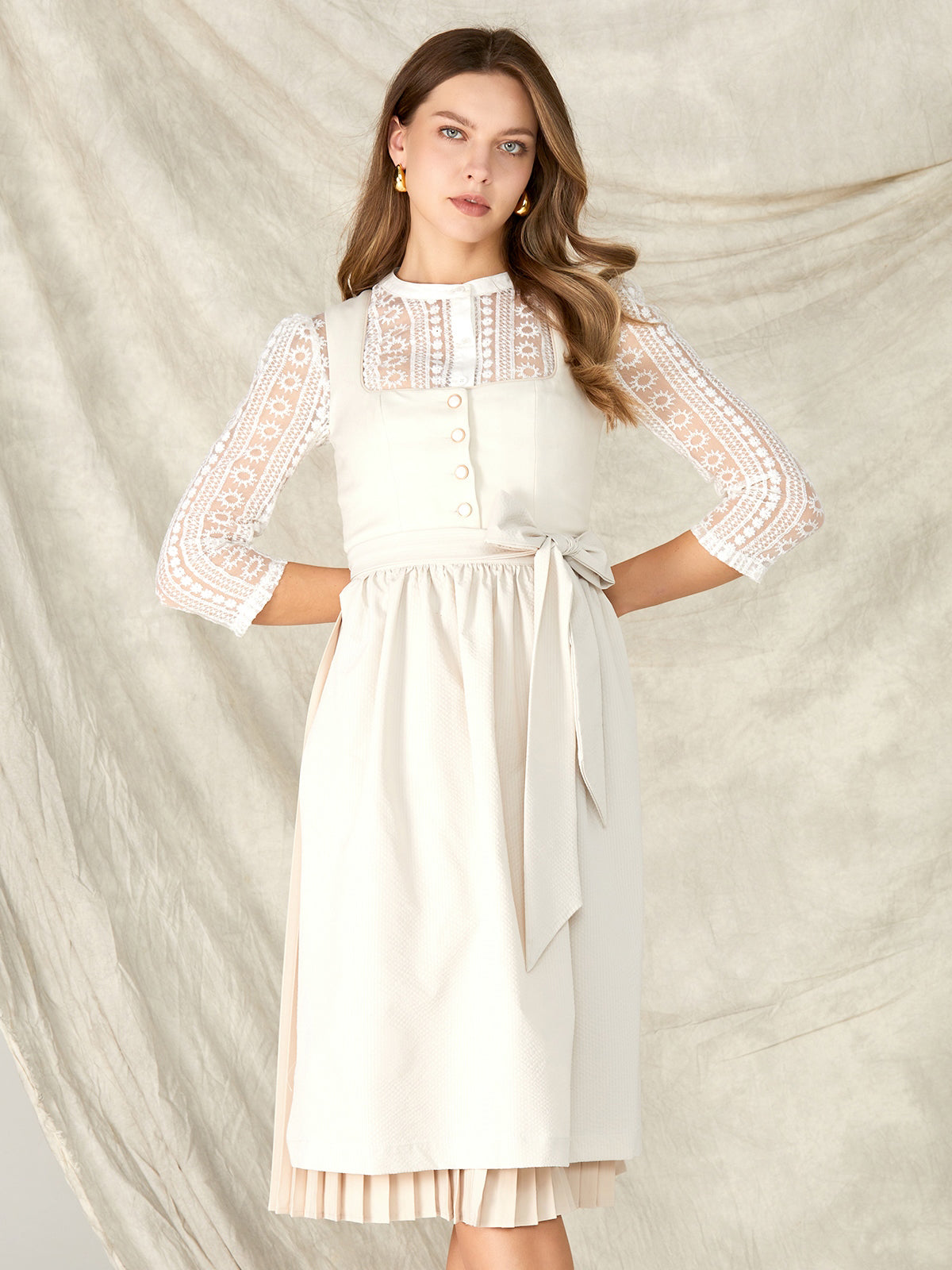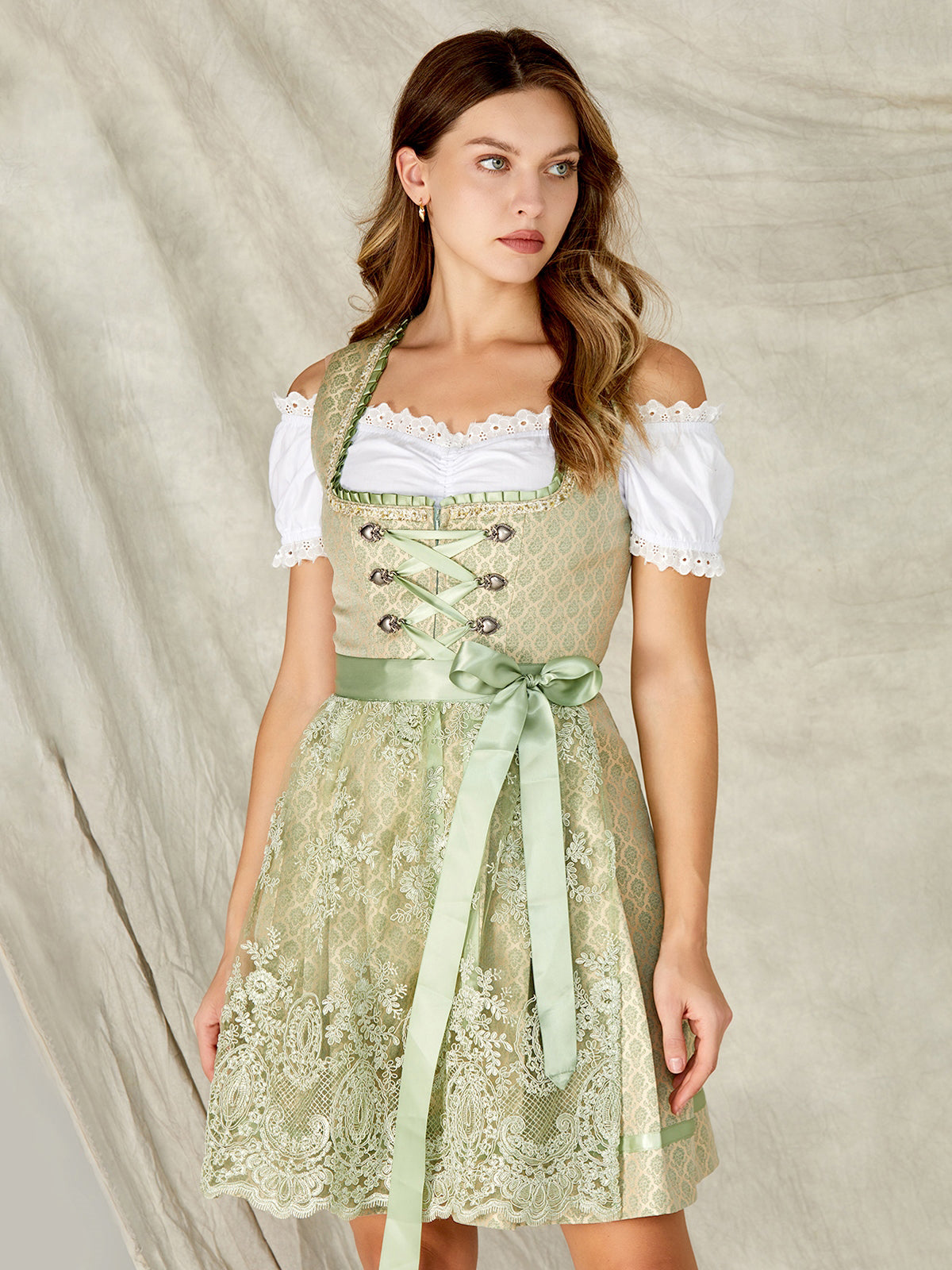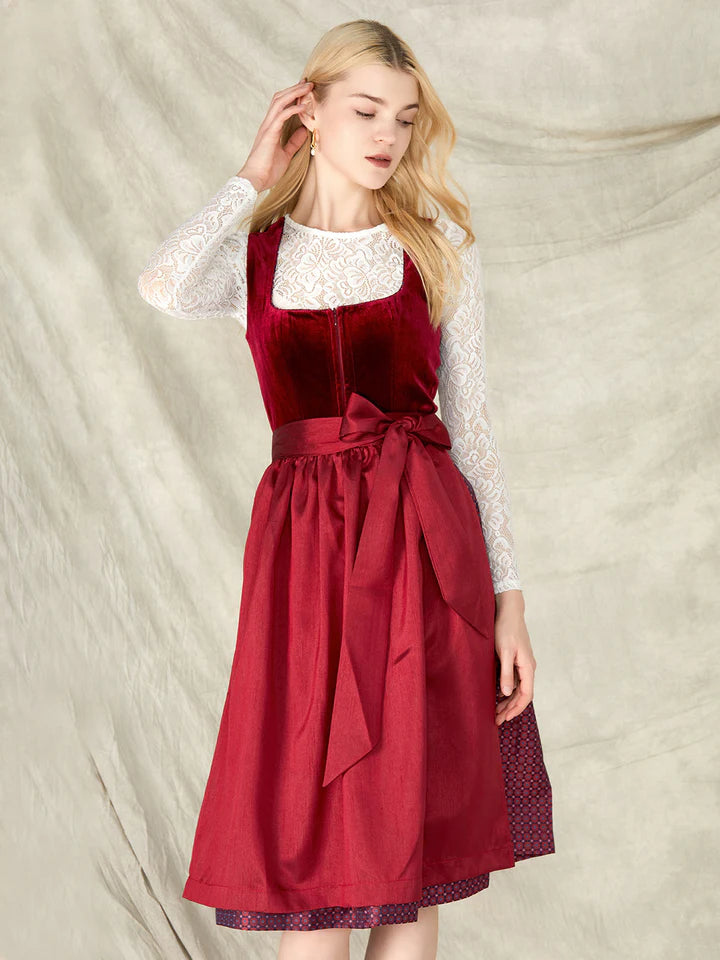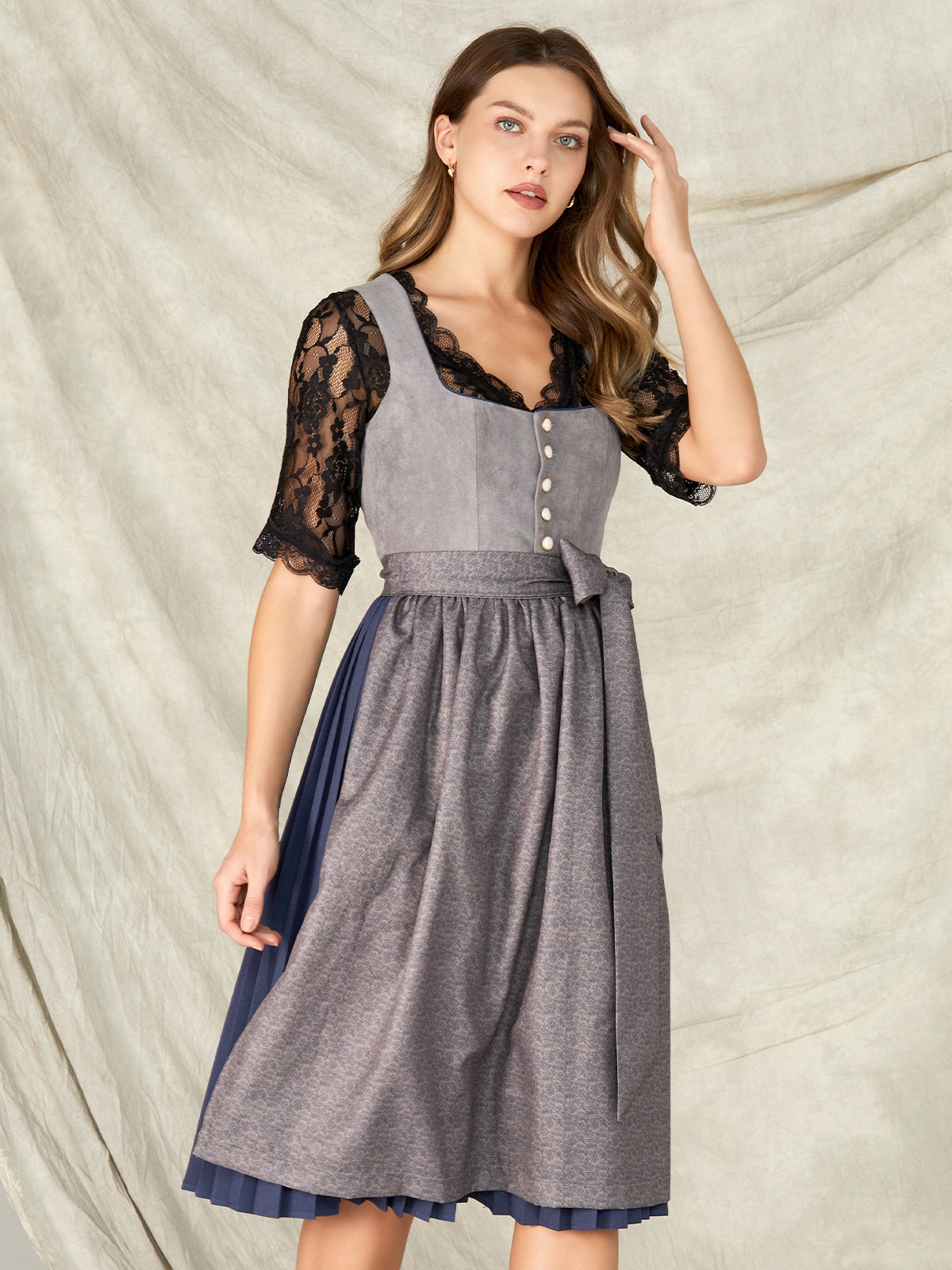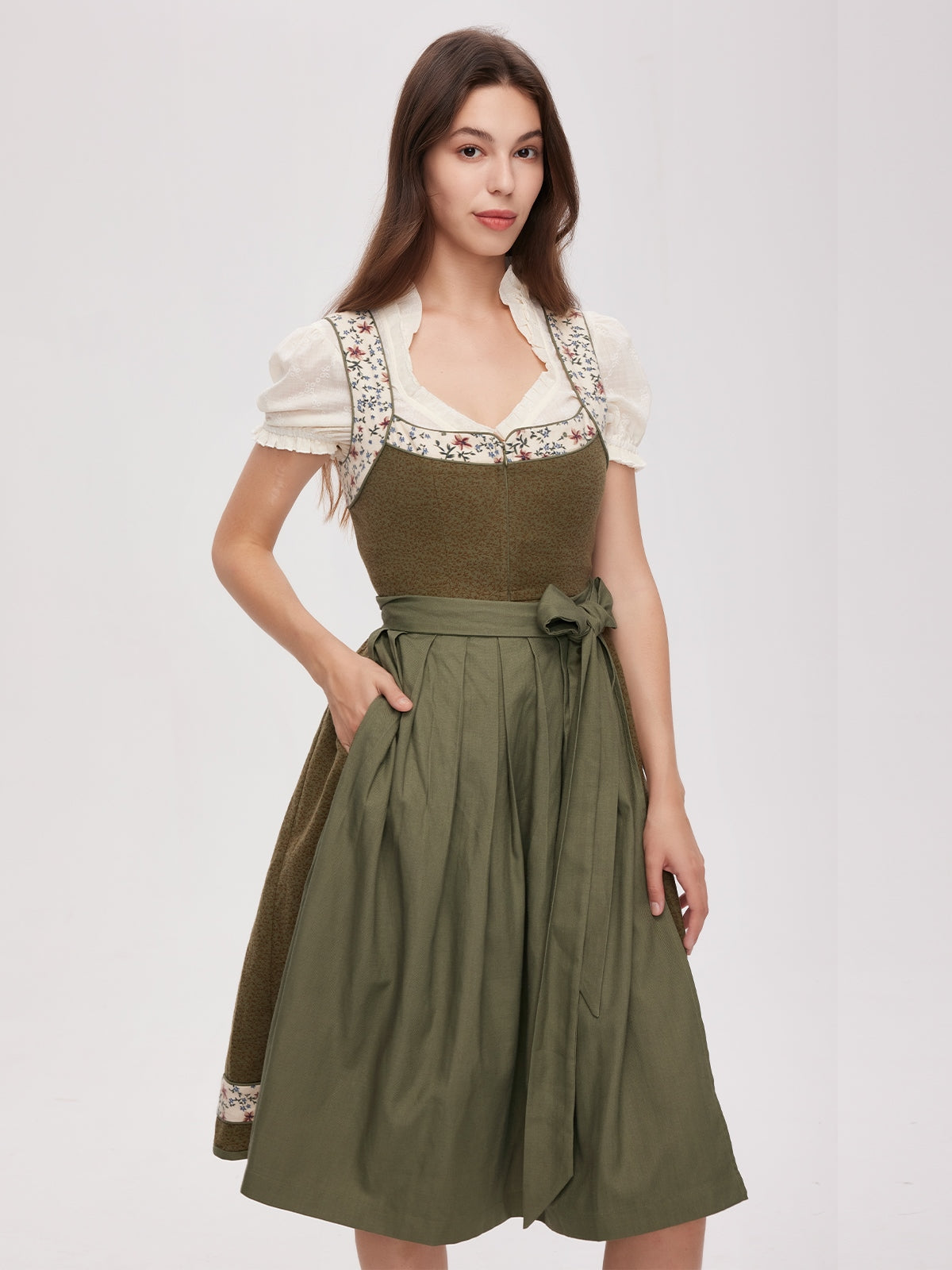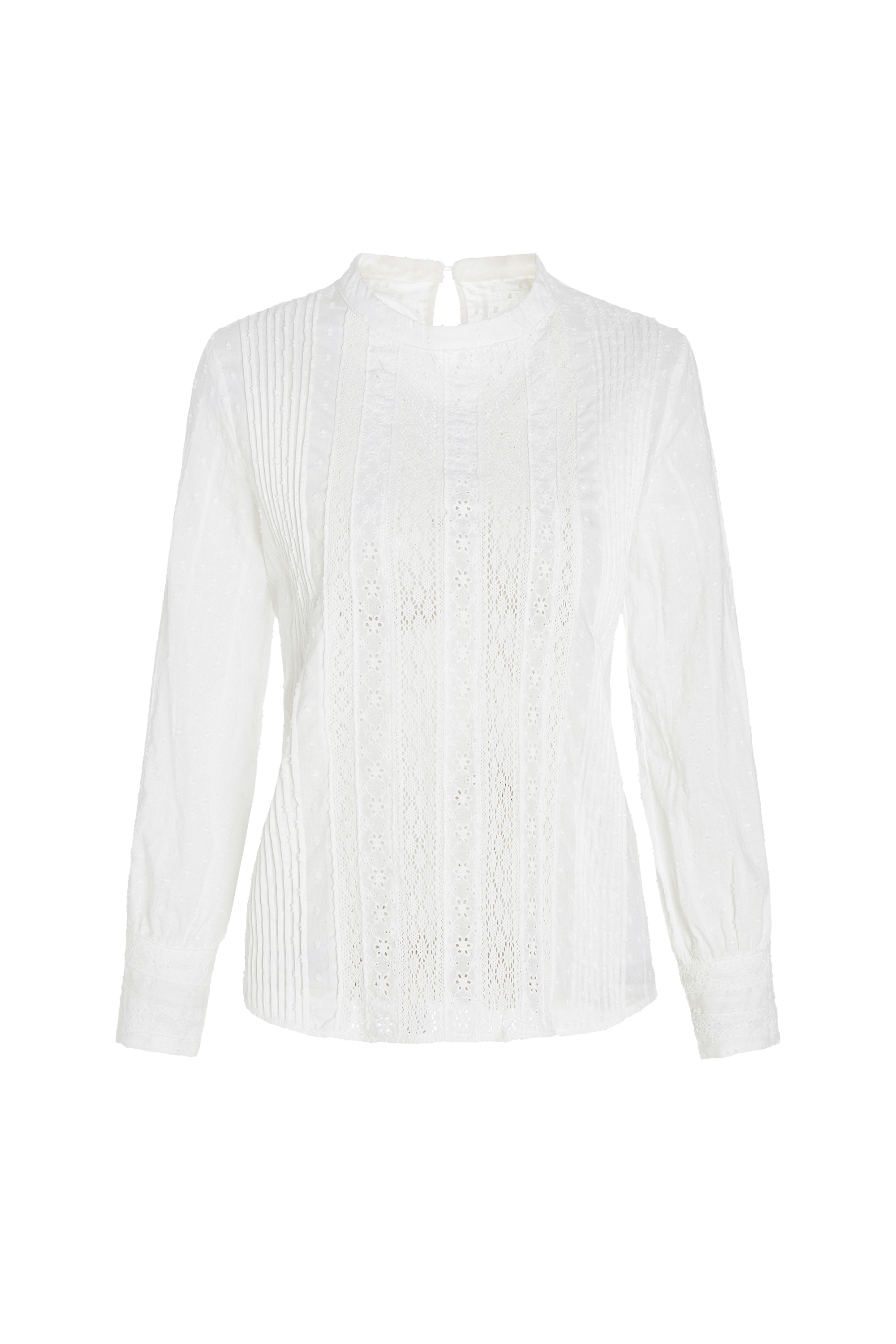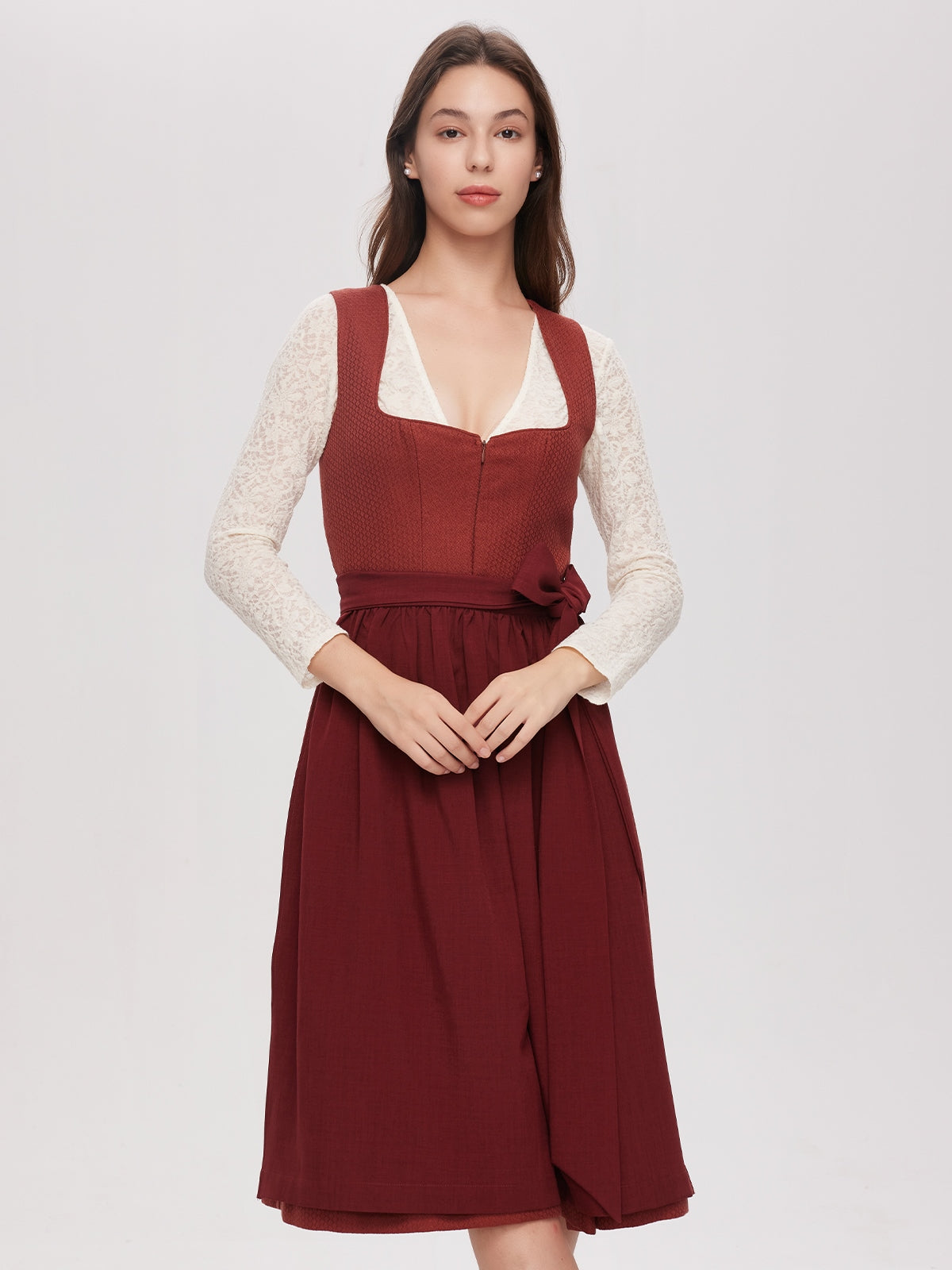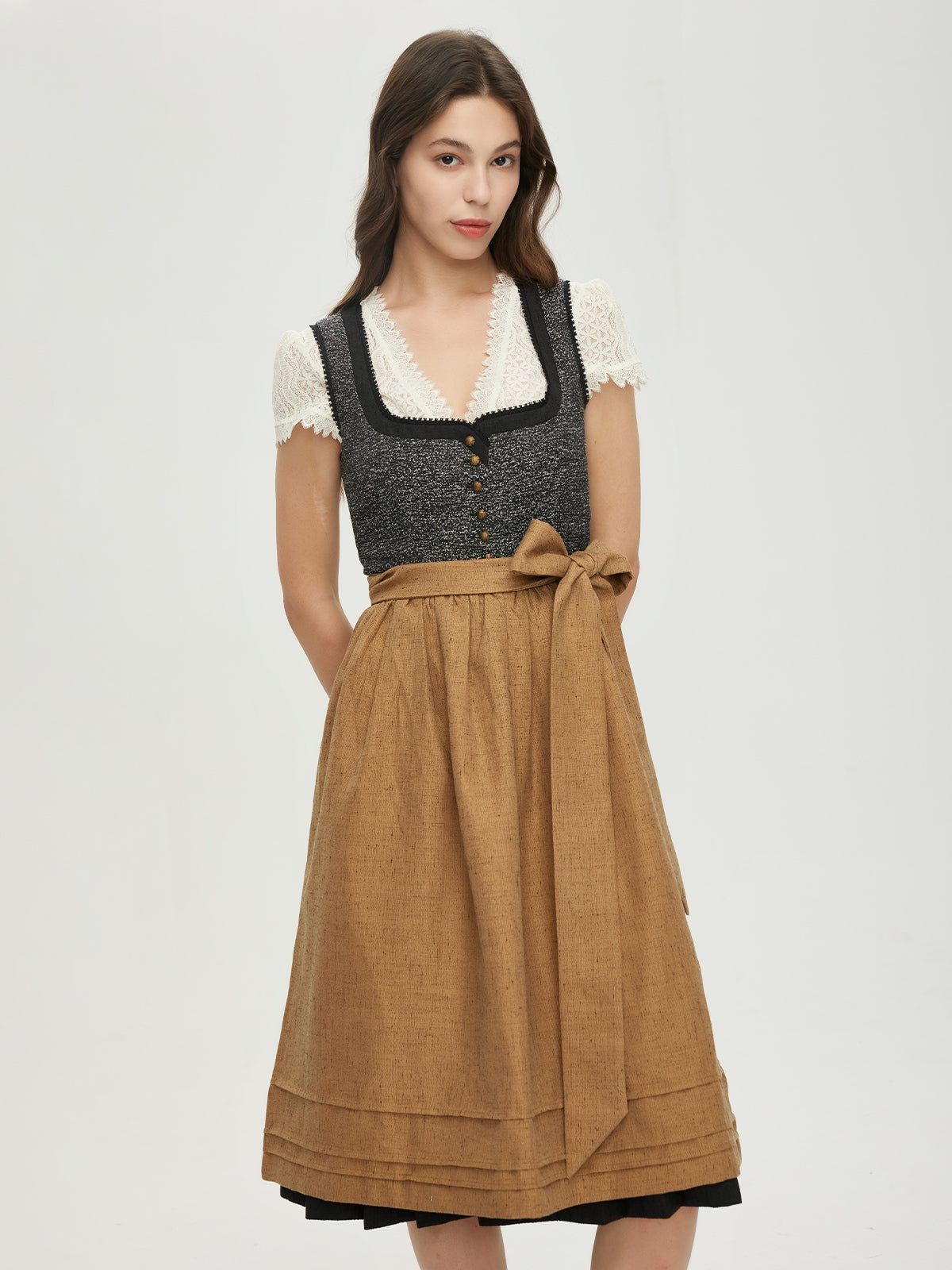Cart
0
I. Introduction
The dirndl plays a prominent role in the world of traditional costumes. It not only embodies the culture and history of a particular region, but is also a symbol of femininity, elegance, and tradition. Among the many different types of dirndls, the red-black dirndl, the zipper-front dirndl, and the red velvet dirndl stand out. In this article, we will explore these three types of dirndls, their distinctive features, and discover why they are so popular with women.
II. The red and black dirndl
The red and black dirndl is a classic among dirndls. The contrasting color scheme of red and black immediately draws attention. Red represents passion, energy, and joie de vivre, while black symbolizes elegance, mystery, and seriousness. Together, they form a combination that looks great both at festive occasions and in everyday wear.
Red and black dirndls come in a variety of cuts and designs. Some have a simple, understated design that emphasizes the classic beauty of the dirndl. Others are decorated with elaborate embroidery, lace, or appliqués that give the dirndl a particularly elegant and romantic touch. Dirndl cuts can vary, from a tight, tailored fit to a slightly looser and more comfortable style. This allows every woman to find the perfect red and black dirndl to suit her figure and personal style.
III. Dirndl with front zipper
Another interesting feature of the modern dirndl is the front zipper. This practical addition has both functional and aesthetic advantages. From a practical point of view, the zipper makes it easier to put on and take off the dirndl, especially when you're in a hurry or want to dress yourself. It also offers a better fit, as it can be tightened or loosened as needed.
Aesthetically, the front zipper can be a subtle or striking design element, depending on its design. A simple, invisible zipper blends harmoniously into the overall look of the dirndl and creates a smooth, clean appearance. On the other hand, a decorative zipper with beautiful buckles or embellishments can become an eye-catcher and give the dirndl a unique touch. Dirndls with a front zipper are therefore a perfect choice for women who value practical details and a modern look without sacrificing the tradition and charm of the dirndl.
IV. The red dirndls
Red velvet dirndls exude a special elegance and warmth. The velvety fabric feels soft and comfortable against the skin, giving the dirndl a luxurious touch. The deep, rich red of the velvet is a real eye-catcher and lends the wearer a regal aura.
This type of dirndl is often decorated with delicate details such as gold thread, sequins, or pearls, which reflect the light and give the dirndl a glamorous sheen. The cuts of red velvet dirndls are usually very feminine and accentuate the woman's curves. They can have long or short skirts, depending on the occasion. A short red velvet dirndl is perfect for a cheerful party or folk festival, while a long model is more suitable for formal events such as weddings or balls.
V. Choosing the perfect dirndl
Now the question arises: how do you choose the perfect red-black dirndl, the front-zip dirndl, or the red velvet dirndl for yourself? First, you should consider your personal preferences and the occasion. If you're going to a traditional event, such as Oktoberfest or a traditional costume party, a classic red-black dirndl or a red velvet dirndl with intricate details might be the right choice. However, if you plan to wear the dirndl in everyday life, perhaps in a Bavarian restaurant or on a trip to the countryside, a front-zip dirndl, which is more comfortable to wear, might be a better option.
Size and fit are also crucial. A well-fitting dirndl should flatter your figure and not be too tight or too loose. It's advisable to take your measurements before purchasing and follow the manufacturer's size charts. You should also pay attention to the quality of the fabric and workmanship. A high-quality dirndl will not only last longer but also look and feel better.
VI. Caring for the Dirndl
To preserve the beauty and longevity of dirndls, proper care is essential. Most dirndls should be washed at low temperatures, preferably by hand or in the washing machine on a gentle cycle. It's important to carefully read the washing instructions on the dirndl's label and use the recommended care products.
After washing, the dirndl should be carefully ironed and dried. It's best to hang it on a wide hanger to maintain its shape. If the dirndl needs to be ironed, do so at a low temperature and with a damp cloth between the iron and the fabric to avoid damaging the fabric. Embroidery, lace, and embellishments should be handled with particular care to avoid tearing or deforming them.
When storing your dirndl, keep it in a dry, dark, and well-ventilated room. It's advisable to store it in a garment bag or box to protect it from dust, moths, and other damage.
After washing, the dirndl should be carefully ironed and dried. It's best to hang it on a wide hanger to maintain its shape. If the dirndl needs to be ironed, do so at a low temperature and with a damp cloth between the iron and the fabric to avoid damaging the fabric. Embroidery, lace, and embellishments should be handled with particular care to avoid tearing or deforming them.
When storing your dirndl, keep it in a dry, dark, and well-ventilated room. It's advisable to store it in a garment bag or box to protect it from dust, moths, and other damage.
VII. The significance of the Dirndl in culture
Dirndls are not just a fashionable garment, but also have deep cultural significance. They are an important part of Bavarian and Alpine culture and are worn at many festivals and traditions. Wearing a dirndl conveys a sense of belonging and pride in one's culture and traditions.
At folk festivals like Oktoberfest, dirndls are ubiquitous and contribute to the festive atmosphere. Women in their beautiful dirndls dance, sing, and celebrate together, making the dirndl a symbol of joy and conviviality. Dirndls are also worn at weddings, baptisms, and other important family celebrations to underscore the significance and dignity of the occasion.
Today, dirndls have also gained international recognition. They are worn not only in Germany and Austria, but also in many other countries around the world, where people appreciate and admire the beauty and charm of this traditional costume.
At folk festivals like Oktoberfest, dirndls are ubiquitous and contribute to the festive atmosphere. Women in their beautiful dirndls dance, sing, and celebrate together, making the dirndl a symbol of joy and conviviality. Dirndls are also worn at weddings, baptisms, and other important family celebrations to underscore the significance and dignity of the occasion.
Today, dirndls have also gained international recognition. They are worn not only in Germany and Austria, but also in many other countries around the world, where people appreciate and admire the beauty and charm of this traditional costume.
VIII. A small dispute about the perfect dirndl
Karin and Lisa, two best friends, are faced with a bit of a dilemma. Both want to attend this year's Oktoberfest and buy a new dirndl. Karin is in love with a red and black dirndl with intricate embroidery, while Lisa prefers a dirndl with a zipper down the front, as she finds it more practical.
They go to a traditional costume shop together and start trying on different dirndls. Karin thinks her red and black dirndl makes her look like a true Bavarian beauty and perfectly emphasizes her feminine curves. Lisa, on the other hand, is thrilled with the comfort of the front-zippered dirndl, saying she can dance and move around with ease.
The two friends debate the pros and cons of their respective favorites, almost coming to an argument. But then they remember the true meaning of Oktoberfest—celebrating fun and friendship. They decide that each of them should buy their favorite dirndl and have an unforgettable time together at the festival.
This shows that although choosing the perfect dirndl can sometimes be difficult, ultimately it is about feeling comfortable in your dress and enjoying the joy of tradition and the festival.
They go to a traditional costume shop together and start trying on different dirndls. Karin thinks her red and black dirndl makes her look like a true Bavarian beauty and perfectly emphasizes her feminine curves. Lisa, on the other hand, is thrilled with the comfort of the front-zippered dirndl, saying she can dance and move around with ease.
The two friends debate the pros and cons of their respective favorites, almost coming to an argument. But then they remember the true meaning of Oktoberfest—celebrating fun and friendship. They decide that each of them should buy their favorite dirndl and have an unforgettable time together at the festival.
This shows that although choosing the perfect dirndl can sometimes be difficult, ultimately it is about feeling comfortable in your dress and enjoying the joy of tradition and the festival.
IX. Conclusion
Red and black dirndls, front-zip dirndls, and red velvet dirndls each offer their own unique beauty and variety. Whether you choose the classic elegance of the red and black dirndl, the practical modernity of the front-zip dirndl, or the luxurious warmth of the red velvet dirndl, you'll definitely own a beautiful garment that not only draws attention but also embodies a piece of culture and tradition.
When selecting and caring for a dirndl, you should be careful to ensure you enjoy your new favorite piece for a long time. And whether you wear a dirndl at a festive occasion or in everyday life, it will always make a special impression and make a charming impression. So let's celebrate the beauty and diversity of dirndls and keep the tradition of this wonderful traditional costume alive.
When selecting and caring for a dirndl, you should be careful to ensure you enjoy your new favorite piece for a long time. And whether you wear a dirndl at a festive occasion or in everyday life, it will always make a special impression and make a charming impression. So let's celebrate the beauty and diversity of dirndls and keep the tradition of this wonderful traditional costume alive.

